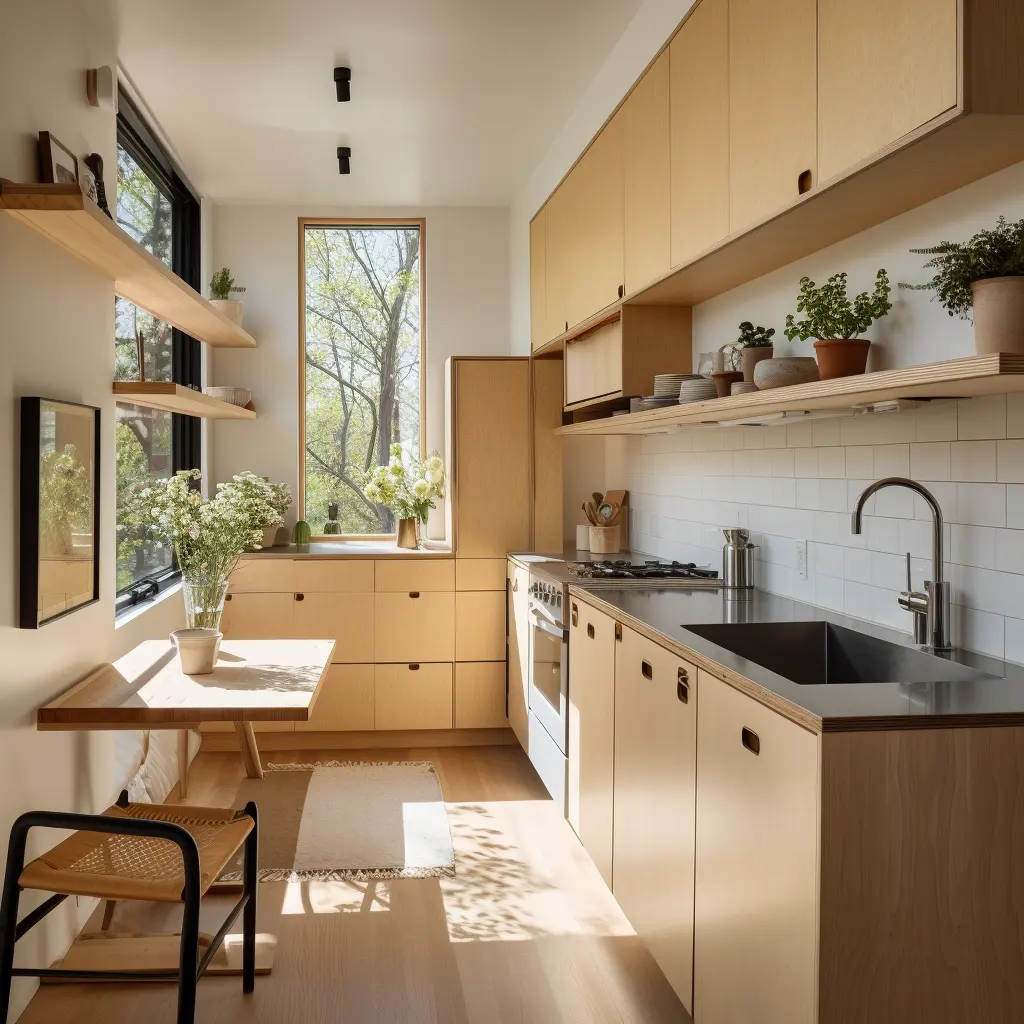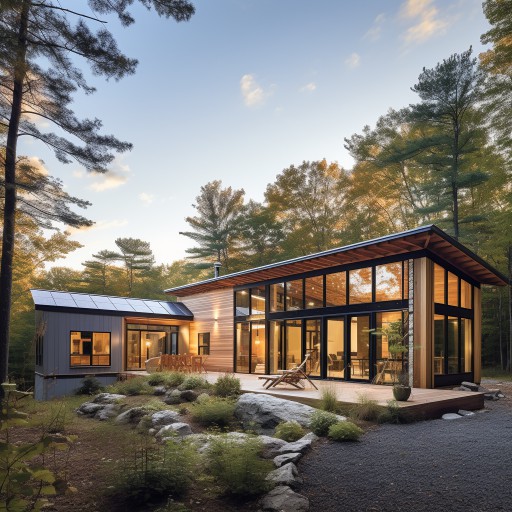Getting prepped for your home renovation

co-founder
- Understanding the Scope of Your Renovation
- Assessing Your Needs and Wants
- Setting a Budget
- Researching and Gathering Ideas
- Hiring Professionals
- Planning for Disruptions
- Securing Permits and Understanding Regulations
- Creating a Timeline
A while back we renovated the kitchen in an old 1887 farmhouse. The house had been a rental, likely converted in the early 2000’s as a way to make a few bucks. The kitchen was oddly shaped, not quite a galley kitchen, but also kind of shaped like an L. The sink was its own little dungeon, where you were sent to scrub away at the dishes surrounded by walls so you wouldn’t be distracted by conversation. How hard could it be to knock out a wall and update some appliances to make the kitchen more functional?
The house wasn’t an open floor plan by any means. It was carved up, with a weird, small hallway and an awkward closet connecting everything together.
In one of the carved up rooms was a bathroom that had a crappy plastic shower in it that we referred to as “The Spaceship” and heinous, old, linoleum floors. This bathroom was larger than any spare bedroom shower needed to be, with approximately nobody using except a few times a year. “The Spaceship” backed up to the sink dungeon in the kitchen. We thought, maybe we should tackle all of these things. It would make the house infinitely more livable, and we were spending more and more time at our “weekend” house.
Why am I telling you about any of this? Because we’re going to talk about the scope of your renovation project. If you’re going to do a big remodel, is it worth doing a bigger one? Maybe. But you’re going to want to plan things out carefully.
Understanding the Scope of Your Renovation
Before you dive into a renovation, you need to consider the unique characteristics of your home, develop a well-thought-out plan, and gather inspiration for your design.
A home renovation involves altering, remodeling, or upgrading the existing structure and aesthetics of your house. This can range from minor changes like painting a room, to extensive alterations like completely transforming your kitchen or building a new extension.
Minor renovations typically involve small changes that require less time, money, and usually don't need professional assistance, such as replacing light fixtures or painting walls. Major renovations, on the other hand, involve more complex tasks such as restructuring walls, redoing plumbing, or renovating entire rooms. These renovations require substantial time, money, professional expertise, and often require regulatory permissions.
Knowing your limits is crucial when embarking on a renovation journey. You need to assess your financial capability, time availability, and DIY skills. A renovation can quickly turn into a nightmare if you bite off more than you can chew!
Assessing Your Needs and Wants
Recognizing your needs versus your wants is key to planning your renovation. Needs are changes you must make for the home to function effectively, whereas wants are additions that would be nice to have but aren't strictly necessary.
Identify and prioritize your needs and wants by considering the functionality, aesthetics, and value each change brings. An updated kitchen may be a need if your current one lacks functionality, while granite countertops might be a want if your budget is tight.
Flexibility is crucial as your plans might need to change due to unforeseen circumstances. You might need to replace a want with a need or vice versa. Be prepared for change – it's all part of the process! Side note: Staying organized with these changes is super important.
Setting a Budget
Your budget determines what you can realistically achieve. But it’s not always easy to reconcile your budget with your needs and wants.
Start by estimating the potential costs of your renovation. Include all materials, labor, and unexpected contingencies. Research the average costs of similar projects online or consult with professionals to get an estimate.
To stick to your budget, prioritize your needs over your wants and monitor expenses regularly. Be realistic, and remember, it’s always better to overestimate costs to avoid any financial stress.
Researching and Gathering Ideas
Research is vital in bringing your renovation vision to life. Look at design magazines, websites, or use apps for inspiration.
Use our tools to keep inspiration photos, edit them and tweak them with our AI model. Make changes in Photoshop if you’ve got the skills. Explore resources like Pinterest, Houzz, and Instagram. Attend home shows or open houses in your area to get real-life inspiration.
Organize your ideas by using digital tools or a traditional scrapbook. This helps you keep track of your favorite designs and easily refer to them later. Your ideas are not something to just set and forget once your renovation is done. Remember how we talked about staying organized with changes? Maybe you and your partner have discussed a few things that are important to you. Let’s say you’ve picked out some tile from a magazine. Later, when the time comes to buy the tile, you realize it’s way too expensive and you need to swap it with something more budget conscious. Then, three years down the road you drop something heavy on that tile, one breaks and you want to replace it. You’ve thrown out the excess in a spring cleaning. “Where did we get this tile from?”. Nobody knows offhand, but fortunately you’ve logged this change in your EcoHome Project Planner.
Hiring Professionals
Most of the time, if you’re doing a significant renovation, DIY won't cut it and hiring professionals is necessary. This could be for structural work, plumbing, or electricity changes, or just something you don’t want to or can’t tackle yourself.
Hiring a good contractor for your home renovation has major benefits. Firstly, professionals bring a wealth of experience and technical knowledge to the project, ensuring that the work is done correctly and to the highest standards. They can also advise on structural considerations, designs that work, building codes, and the best materials to use, helping to avoid costly mistakes. Secondly, professionals can often get the job done more efficiently and on a quicker timeline than a DIY approach, as they have the right tools and a crew to expedite the process. Lastly, professionals are generally insured, which means any accidents or damage occurring during the renovation process will be covered. This can provide peace of mind throughout your project.
Choosing the right team involves checking their credentials, references, and past work. Always get multiple quotes to ensure you’re getting a fair price. You can check out our guide on hiring your team, but please do your homework, don’t skimp, don’t choose the cheapest bid just because it’s the cheapest, and don’t be overly informal with the arrangement. Understand the contracts and agreements to avoid any potential miscommunications or disagreements later.
Planning for Disruptions
Renovations are inherently disruptive. They will turn your home into a construction site with dust clouds, noisy power tools, and constant foot traffic of workers, turning your daily life upside down. This disruption can be managed, however, with careful planning and a few strategies to keep your routines as undisturbed as possible.
Before the renovation begins, get a game plan for living amidst the construction. If your kitchen is getting a facelift, for example, consider setting up a temporary kitchenette in another part of your house. This could be as simple as moving your microwave, toaster, and a small refrigerator to a convenient spot. Pro-tip: limit the number of dishes you have in your temporary kitchen to the bare minimum or add a “clean up” rule so you don’t end up with a nightmare (we don’t like disposable cutlery and plates, but we won’t judge).
If it's your laundry room that's under renovation, you might want to plan your washing cycle ahead, like doing a bulk laundry before the work starts or arranging to do your laundry at a friend's house or a local laundromat. One area that often gets overlooked is the need for clean and quiet spaces for work or study, especially if you or your kids are working or schooling from home. Consider designating a specific room or area as a construction-free zone where normal routines can continue undisturbed.
Despite the best planning, there will be times when the disruptions from the renovations can become too much to handle, particularly during major overhauls. During these times, you may want to consider alternative accommodations. This could be staying with extra kind relatives or extra, extra kind friends, renting a short-term property, or even booking a hotel room. If your budget allows, you could even consider a short vacation, combining the necessity of getting away from the construction chaos with the pleasure of a relaxing getaway. We have friends that are currently taking the opportunity to move to a different city for a month while they renovate.
Remember that renovations, no matter how disruptive, are temporary. The dust will settle, the noise will cease, and before you know it, you'll be enjoying the refreshed and upgraded comfort of your newly renovated home.
Securing Permits and Understanding Regulations
We talk about it all of the time, but permits and regulations ensure your renovation is safe and adheres to local building codes. Not adhering could lead to penalties, extra costs, or problems when you decide to sell your home.
It’s beyond the scope of this article to cover everything about permits, but start by researching your local building codes and regulations. Then apply for the necessary permits. This could be a time-consuming process, so start early!
Creating a Timeline
A timeline helps manage expectations and keeps your renovation on track. Yes, they can be a pain to manage, but they’ll let you know how things are going, help you maintain accountability for yourself and your team, and generally you will thank yourself for keeping it up to date. This also is beyond the scope of this article, but our task lists can be repurposed for this pretty easily. Or you can use your favorite project management system, notion template, spreadsheet, or whatever. Just do something.
Start by listing each task and estimating how long it will take. Be realistic and include time for unexpected delays. Remember to be flexible. Renovations often take longer than planned, so be prepared for changes in your timeline.
Planning a home renovation is a big task. But with careful planning, realistic expectations, and a little flexibility, you can transform your home into a place that meets your needs, reflects your style, and increases its value. Use this guide as a roadmap for your renovation journey. Remember, the goal is to create a space you love, and the journey there should be just as enjoyable!

Renovate with EcoHome
EcoHome empowers homeowners to confidently build healthy and comfortable homes for a fair price.
Sign UpLocations View All →
NY
- Albany
- Binghamton
- Buffalo
- Esopus
- Freeport
- Hempstead
- Highland
- Kingston
- Long Beach
- Marlboro
- Mount Vernon
- New Paltz
- New Rochelle
- New York City
- Niagara Falls
- North Tonawanda
- Olivebridge
- Plattekill
- Rochester
- Rome
- Saugerties
- Schenectady
- Shandaken
- Syracuse
- Troy
- Utica
- Valley Stream
- Wallkill
- Woodstock
- Yonkers
NJ
- Bayonne
- Brick
- Camden
- Cherry Hill
- Clifton
- East Orange
- Edison
- Elizabeth
- Jersey City
- Lakewood
- Middletown
- Newark
- Old Bridge
- Passaic
- Paterson
- Toms River
- Trenton
- Union City
- Woodbridge
CT
PA
- Allentown
- Altoona
- Bethel Park
- Bethlehem
- Chester
- Easton
- Harrisburg
- Hazleton
- Lancaster
- Lebanon
- Monroeville
- Philadelphia
- Pittsburgh
- Reading
- Scranton
- Wayne
- Wilkes Barre
MD
- Abingdon
- Baltimore
- Bethesda
- Bowie
- Columbia
- Dundalk
- Ellicott City
- Frederick
- Gaithersburg
- Germantown
- Glen Burnie
- Potomac
- Rockville
- Severn
- Silver Spring
- Towson
- Waldorf



